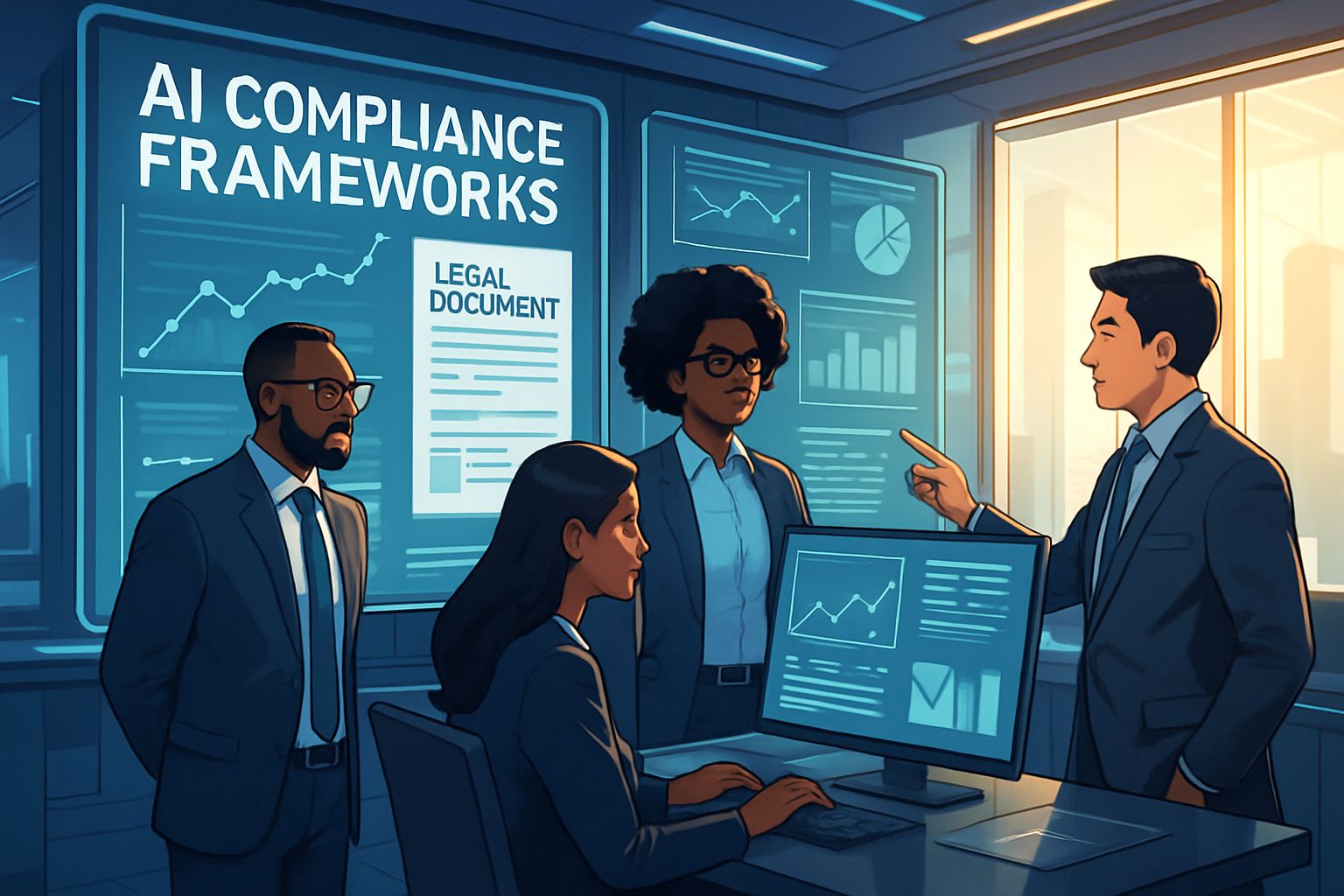
AI CERTS
10 hours ago
AI Compliance Frameworks: Navigating Global Data Laws
However, no single toolkit guarantees perfect alignment with every jurisdiction. Instead, companies weave together laws, standards, and vendor products. Moreover, regulators continue updating expectations, adding fresh complexity. This article maps the fast-moving landscape and shows how leaders can stay ahead.

Regulatory Pressure Intensifies Globally
European lawmakers finalised the EU AI Act in 2025. Obligations for general-purpose models start August 2025, while high-risk requirements follow in 2026. Meanwhile, GDPR enforcement stays vigorous, with fines reaching four percent of global turnover. Additionally, the AI Act can impose penalties of seven percent for severe breaches.
Across the Atlantic, U.S. states update privacy statutes, and federal agencies publish policy memos. Nevertheless, organisations often treat the combined demands as one continuous compliance burden. Here, AI Compliance becomes the integrating concept that ties regional rules together.
These mounting pressures force leadership teams to adopt proactive stances. In contrast, a wait-and-see approach now guarantees future remediation costs. The key takeaway: regulation will tighten further. Consequently, enterprises must embed adaptive controls without delay. Transitioning forward, standards bodies offer helpful blueprints.
Standards Shape Control Programs
NIST released its AI Risk Management Framework plus a Generative AI Profile. Furthermore, the agency issued differential-privacy guidance and threshold-cryptography drafts. KPMG analysts state these documents provide practical direction for U.S. firms building governance systems.
ISO joined the movement through ISO/IEC 42001, giving global teams a shared vocabulary. Google’s Secure AI Framework and Microsoft’s Responsible AI principles translate these ideas into cloud controls. Moreover, the Coalition for Secure AI spreads best practices across vendors.
Therefore, standards convert abstract legal text into actionable engineering steps. AI Compliance teams map articles of GDPR or the AI Act to NIST functions, then to cloud controls. This layered method supports audits and accelerates product launches. Summarising, standards supply the skeleton; technical tools add muscle. The following section explores those tools.
Technical Tools Enable Compliance
Privacy-Enhancing Technologies, or PETs, sit at the heart of modern control stacks. Differential privacy adds calibrated noise, limiting individual exposure. Federated learning trains models locally, avoiding raw data transfers. Homomorphic encryption and secure multi-party computation allow joint analysis on encrypted inputs. Additionally, trusted execution environments protect data in use.
OneTrust integrates these capabilities with Azure OpenAI, automating registration, monitoring, and Data Subject Request workflows. Blake Brannon calls the update “a game-changer” because every component now adheres to global rules. Professionals can enhance their expertise with the AI+ Security Compliance™ certification.
Academic work mirrors industry progress. A 2025 MDPI paper proposes a Privacy-Preserving Federated Learning architecture featuring a Compliance & Explainability Module. Consequently, technical safeguards align with legal recordkeeping. These examples demonstrate how AI Compliance bridges law and engineering. To grasp the market momentum, consider the numbers next.
Market Stats Drive Investment
Grand View Research valued the PET market at USD 3.12 billion in 2024. Moreover, analysts forecast USD 12.09 billion by 2030, reflecting a 25 percent CAGR. Other reports place privacy-preserving AI between USD 2.7 and 4.3 billion today, also predicting double-digit growth.
Firms justify spending by comparing costs with potential fines. Under GDPR, sanctions hit €20 million or four percent of turnover. The AI Act threatens even higher percentages. Therefore, budget approvals accelerate when teams present clear risk-versus-cost charts.
Key investment drivers include automated DPIA workflows, immutable logging, and audit-ready documentation. Summarising, capital flows toward solutions that cut liability while speeding delivery. However, benefits coexist with notable drawbacks, explored now.
Pros And Persistent Challenges
Advantages appear compelling. PETs enable cross-border analytics without exposing raw personal data. Differential privacy offers quantifiable guarantees, satisfying Data Privacy regulators. Vendor governance layers automate tedious documentation, lightening staff workload.
Nevertheless, technical overhead remains significant. Homomorphic encryption slows computation, and federated learning adds orchestration complexity. Legal uncertainty also persists. The European Data Protection Board states that whether a model contains personal data depends on specific context.
Operationally, blending cryptography, law, and software engineering taxes most organisations. Outsourcing eases pressure yet introduces dependency risks. In short, AI Compliance delivers value, yet challenges demand disciplined execution. The following checklist helps leaders navigate implementation.
Implementation Checklist For Leaders
Executives should ask vendors the following:
- Which jurisdictions and laws does your Regulatory Framework address?
- Do you provide DPIA templates, model cards, and training-data inventories?
- Which PETs are used, and what privacy guarantees are measured?
- Has an independent auditor reviewed the system against GDPR or ISO standards?
- Who acts as data controller, and how are cross-border transfers managed?
Additionally, leaders must verify real-world deployments and enforcement history. Independent audits, regulator comments, and performance metrics build confidence. Summarising, thorough questioning uncovers hidden gaps. Subsequently, future outlooks guide strategic planning.
Future Outlook And Actions
Regulatory timelines remain firm. The European Commission confirmed no pause for 2025 obligations. Meanwhile, U.S. agencies publish guidance rapidly. Consequently, organisations have limited time to adapt.
Market data shows investor interest climbing, supporting further tool innovation. Moreover, research continues evolving PET efficiency, aiming to reduce overhead. Therefore, expect AI Compliance platforms to blend deeper automation with richer analytics.
Leadership teams should pilot emerging frameworks now, gather metrics, and scale proven patterns. Summarising, proactive engagement secures competitive advantage. In conclusion, key messages deserve reflection.
Conclusion
Global rules tighten, and penalties grow harsher. However, layered standards, PETs, and governance products provide workable paths. Organisations that embrace AI Compliance early can safeguard Data Privacy, satisfy GDPR, and align with every relevant Regulatory Framework. Moreover, professionals bolster credibility through the AI+ Security Compliance™ credential. Start building robust programs today and turn regulatory pressure into strategic opportunity.



